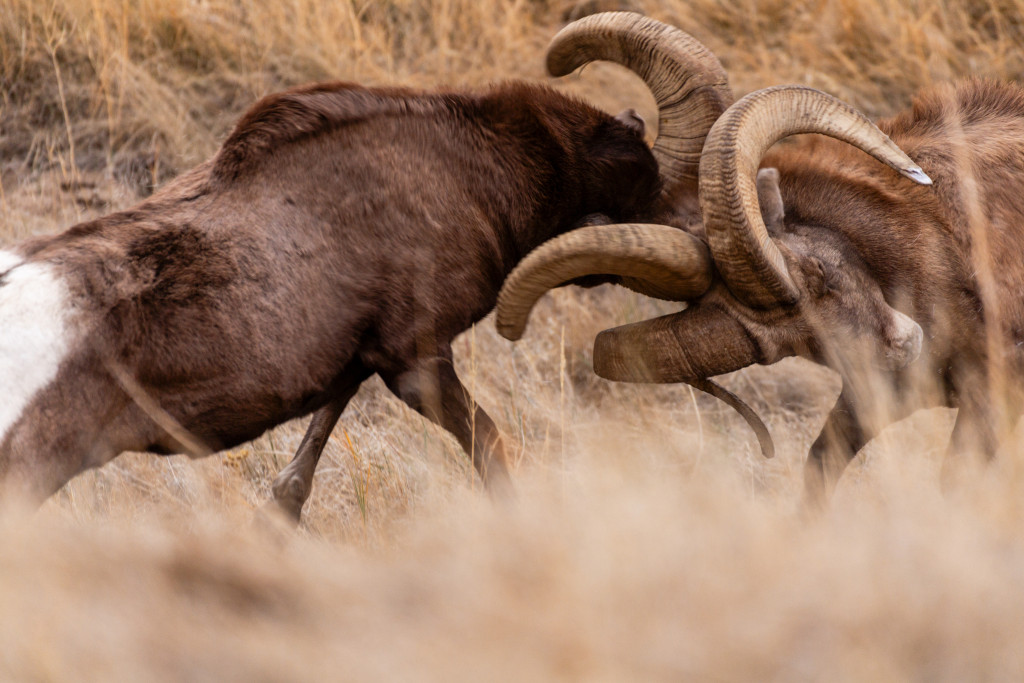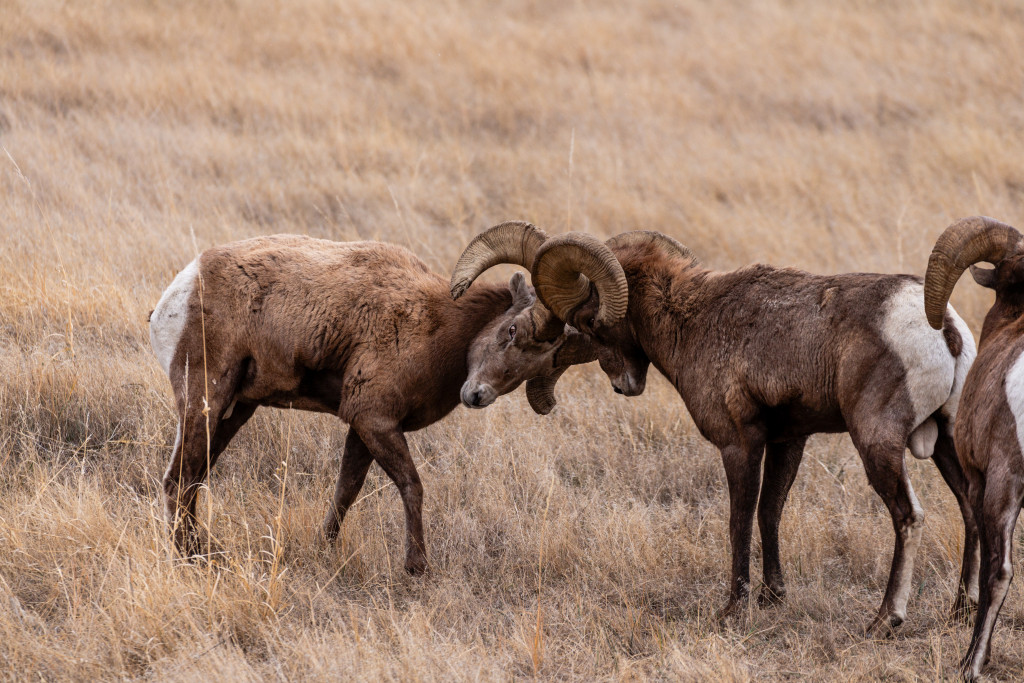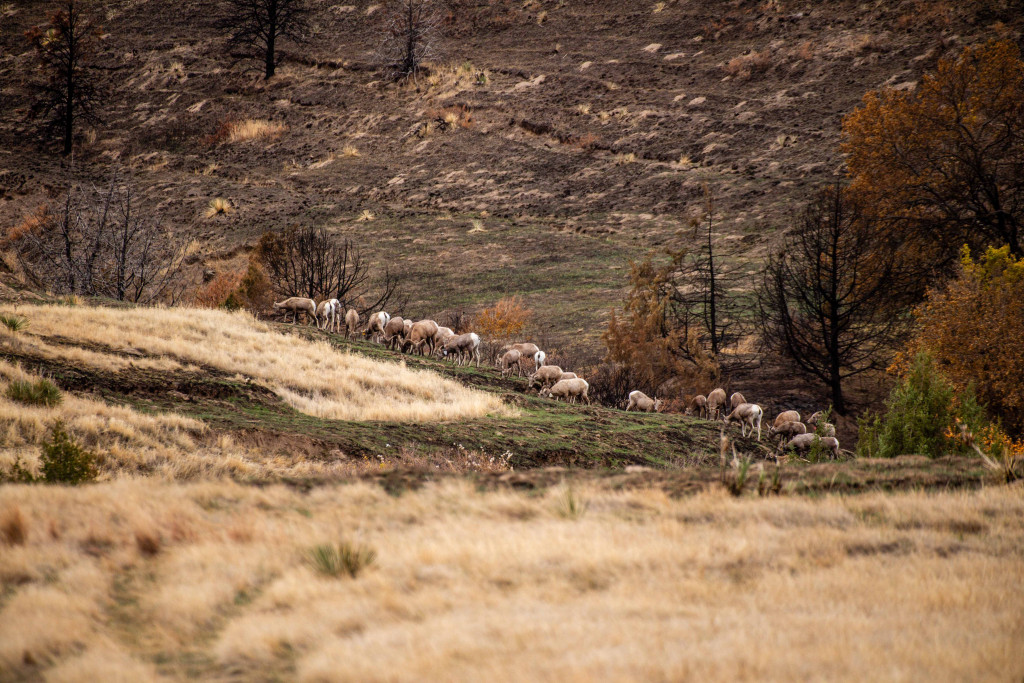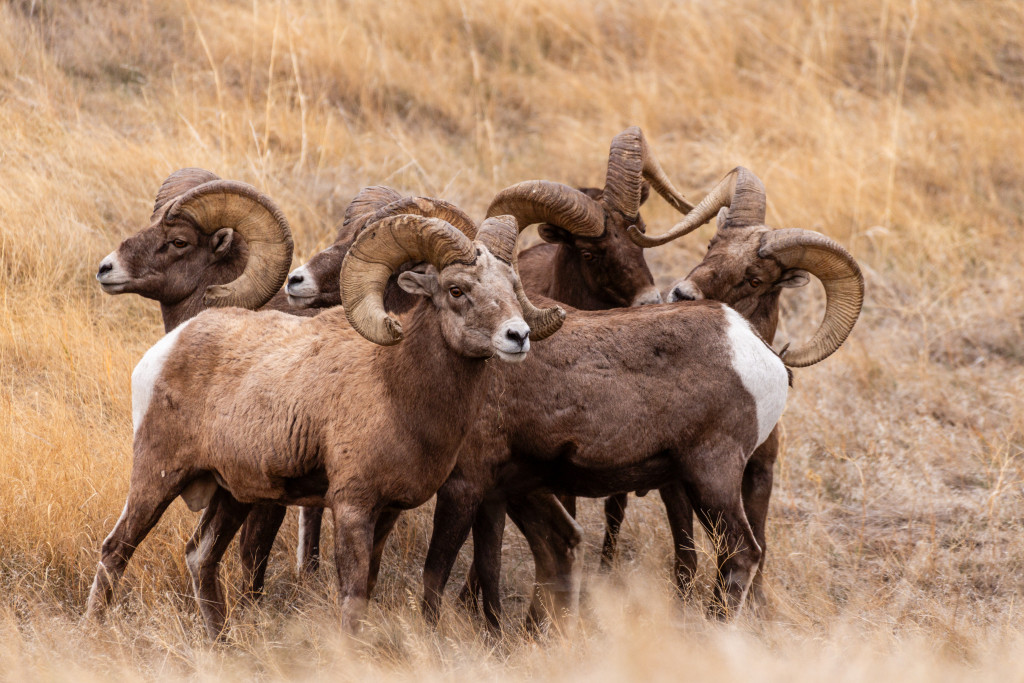The bighorn sheep pre-rut provides an incredible show on Nebraska’s wildlife scene.
Enlarge

Photo by Justin Haag, Nebraskaland Magazine
By Justin Haag
Nebraska’s Rocky Mountain bighorn sheep (Ovis canadensis) and their amazing climbing capabilities are enjoyable to watch throughout the year, but there’s arguably no greater show than when they put their heavy headwear to use during fall.
It’s the headwear, after all, that gives the species its name. With a spread that can reach almost 3 feet wide, the horns on a mature ram can weigh more than 30 pounds. That exceeds the weight of all the other bones in its body combined.
During the pre-rut, a period of fall in which rams work to establish dominance among fellow males, the horns become especially useful. While subordinate rams occasionally sneak past the dominant ones for breeding, researchers estimate that in each herd the top one to three rams father 60 percent or more of the lambs.

Because mating behaviors by bighorn sheep and other ruminant species are triggered by length of daylight, the timing is predictable. With that in mind, I ventured to the Wildcat Hills in early November last year to see if I could catch the show. After finding a group of five similar-sized rams working to determine their pecking order below the region’s rugged landforms, it didn’t take long to determine it was well worth the journey.
Similar to gunfighters of the Old West, rams frequently squared off in twos and stared each other down. Sometimes, they reared up on hind legs in what is called a “threat jump.” And, occasionally, they’d perform the best show of all — a head-on collision creating the cracking sound said to be audible from miles away.
Scientists have estimated the collisions generate a force 60 times greater than that required to crack a human skull. If one ram is fortunate, the other will concede until the following year and more collisions won’t be required that day. The victor will mate with the ewes of choice, and come spring, they’ll deliver offspring with his winning genetics.

Such collisions require a special build. Horns are constructed of bone extending from the skull, covered by a thick sheath of keratin, the sheep’s version of the material that forms human fingernails. Not only are the horns solid enough to withstand the collision with minimal damage, the rams’ skulls are specially constructed to take a blow. The skulls are segmented with suture-like seams, giving them flexibility to lessen the risk of cracking. In addition, large frontal sinus cavities protect the brain by distancing it from the point of impact.
While the clashing of the horns may be the most dramatic part of the rams’ pre-rut behavior, each blow is usually preceded by long periods of jostling that is also captivating. Most of this group’s time that day was spent in a huddled mass, nudging one another with their horns. This activity often results in wear on the horns’ tips, known as brooming. During these sessions, rams use their stout legs to kick their adversaries, often in the testicles. No, being a bighorn ram surely isn’t always fun.

A few hundred yards away from this group of rams was a large group of grazing ewes, lambs and smaller rams. With the new forage that had emerged from areas recently burned by wildfires, they seemed uninterested in the drama between the big males. Yet, the outcomes of the day’s competition would determine which males the females would be spending time with in the weeks to come.
Furthermore, it would determine the genetic make-up of the herd for years to come. For these reasons, and of course human tendency to marvel at a “good” wreck, it’s a show worth watching.

The post Clash of the Bighorns appeared first on Nebraskaland Magazine.
















